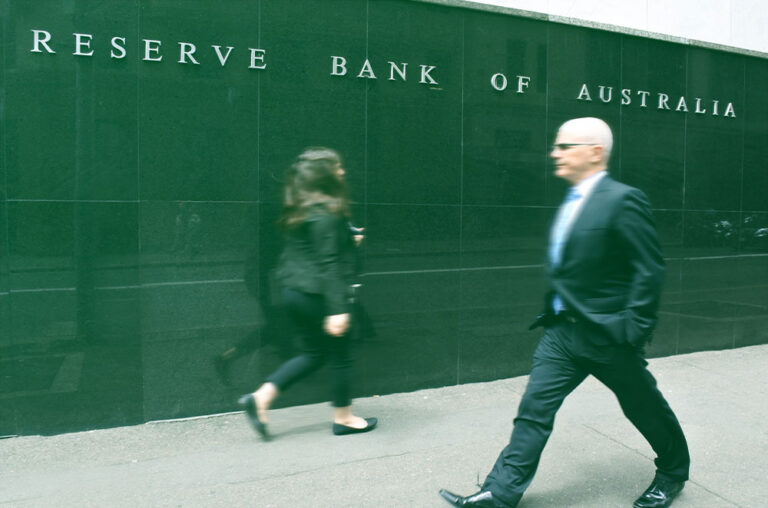
Frank Uhlenbruch, Investment Strategist in the Janus Henderson Australian Fixed Interest team, provides his Australian economic analysis and market outlook.
Market review
Massive fiscal and monetary stimulus boosted economic growth, both in Australia and abroad. Despite some volatility caused by a temporary surge in inflation expectations and the US Federal Reserve (Fed) raising the prospect of eventually tapering its Quantitative Easing (QE) program, risk appetite held up. Equity markets were firmer and credit markets remained well-supported. There was some further flattening in the domestic yield curve as longer-dated government bond yields edged lower. The Australian bond market, as measured by the Bloomberg AusBond Composite 0+ Yr Index, ended May 0.36% higher.
The RBA continued to signal that it doesn’t see the conditions in place for tightening until 2024 at the earliest. Nevertheless, markets are still looking for a tightening cycle to commence early 2023.
WEBINAR: Residential Mortgage Backed Securities (RMBS) with James Austin from Firstmac
Yields at the shorter end of the yield curve remained anchored around the Reserve Bank of Australia’s (RBA) 0.10% cash rate and three-year government bond yield target. Further out along the curve, markets are still discounting future tightening, with the November 2024 government bond yield ending the month 2 basis points (bps) lower at 0.28%.
Longer-dated government bond yields spiked to mid-month highs on concerns that strong growth, supply bottlenecks and massive stimulus, particularly in the US, could lead to a breakout in inflation. After peaking at 1.81%, the 10-year government bond yield then fell to end the month 6bps lower at 1.69% as inflation fears ebbed. The 30-year government bond also finished 6bps lower at 2.61%.
Partial demand indicators point to an ongoing vigorous rebound in activity. Encouragingly, strong business conditions and high levels of confidence are starting to translate into a lift in animal spirits. Business capital investment intentions have lifted across a range of surveys and if realised, will add to the longevity and broadness of the current rebound. We look for the Australian economy to expand by around 1.0% to 1.25% over the March quarter in the upcoming national accounts release.
The rapid recovery in the labour market took a breather in April with the end of JobKeeper and an early Easter driving a fall in hours worked and labour force participation. The number of jobs fell by 30,600, while the unemployment rate edged lower to 5.5%. Forward labour demand indicators remain strong and we expect to see jobs growth resume over the months ahead, even after allowing for the Victorian COVID-19 circuit-breaker lockdown.
The improvement in labour market conditions has yet to translate into a lift in wages, one of the pre- conditions for a tightening in monetary conditions. The March quarter Wage Price Index rose by 0.6% and by 1.5% over a year ago.
Money market rates remained very low given the 0.10% official cash rate and RBA forward guidance for an extended period of highly accommodative policy. Three-month bank bills ended the month largely unchanged at 4bps, while six-month bank bills ended 0.5bps lower at 9.0bps.
After the ebb and flow in bond yields and primary supply since February, the credit market enjoyed a period of relative calm in May. iTraxx Australia CDS traded in a fairly tight 2bps range over the month, settling 1bps tighter at 60bps to end May. The additional income available from credit was complemented by a very modest tightening in spreads and assisted positive excess returns. In Australia, bank floating rate note (FRN) spreads tightened by 2bps, while corporate credit spreads rallied 1bps. Higher yielding floating rate spread sectors, like global loans performed well, returning 0.5%, while subordinated bank notes also performed well locally, returning 0.4%, outpacing listed hybrids which gave back some of the very strong late April rally, returning -0.3% for May.
From an Environmental, Social and Governance perspective, the government guaranteed National Housing Finance Investment Corporation issued their first Sustainability bond, which has both social and environmental impact features, providing for the renewal of social housing with energy and water efficient buildings, including solar installations and social support initiatives. We were glad to support the transaction which will assist the local community, while investors were also able to access an attractive 0.3% yield advantage above similar government bonds.
Corporate supply was light, with Paccar issuing a 3.5-year and NBN Co issuing a 7-year at ASW+100, both appeared reasonably good value in our view. The major banks were active after reporting their half year results, with Westpac issuing a Tier 2 green bond in Euro, then NAB issuing a Tier 2 in US dollars. The issuance of Tier 2 into offshore markets allowed the local market to perform well as local supply fears abated. Later in May Westpac was the first major bank since early 2020 to issue a long-term senior bond. They chose the US dollar market to issue A$3.15bn across both 5- and 10-year maturities, extending their maturity profile beyond the 3-year Term Funding Facility (TFF) window.
The market had been eagerly awaiting confirmation of the pricing of 5-year bank senior debt and after such a long hiatus from primary markets, the new 5-year deal swapped to a local equivalent of ASW+48, in line with secondary levels. At the time of writing, banks still have access to A$81bn of 3-year TFF funding at a cost of 0.10%. Westpac’s activity suggests the combination of slowing deposit growth, rising credit growth and the desire to smooth out maturity profiles will keep bank treasurers at the ready as the TFF winds down.
Market outlook
Both the RBA and Treasury look for a period of above trend economic growth sufficiently strong enough to push the unemployment rate down towards 4.75% by mid-2023. The focus of fiscal and monetary policy remains outcome based, with full employment the primary goal.
While output gaps caused by COVID lockdowns are expected to be closed, neither the RBA nor Treasury see an inflation break out, with both looking for inflation to settle in the 2.00% to 2.25% range by mid-2023. The Budget is only expected to go into the repair phase once full employment levels have been reached, thus avoiding the risk of premature austerity.
While the RBA upgraded their economic forecasts in the latest Statement on Monetary Policy, we believe there has been no material change to their reaction function.
In our view, the stance of monetary policy will only change once the tightening trifecta conditions have been met. These are:
- an unemployment rate close to 4%;
- actual inflation at 2% or above on a sustainable basis; and,
- wages growth of at least 3%.
The RBA continued to signal that it doesn’t see the conditions in place for tightening until 2024 at the earliest. Nevertheless, markets are still looking for a tightening cycle to commence early 2023, with the cash rate to get to over 2% by late 2026, above our estimates of the neutral cash rate. This implies restrictive policy settings over the second half of the decade and can only be validated by a sustained breakout in inflation. Given the inertia in wages setting, we believe the market is premature in fully pricing in restrictive policy settings.
While we acknowledge that expansionary fiscal policy, particularly in the US, carries the risk of overstimulating economies, we see investors compensated for this risk by current yield curve steepness with the 10-year government bond yield 17 times higher than the prevailing cash rate. Our view is that the current 10-year government bond yield at 1.70% (at the time of writing) is fairly valued.
Spread sectors are likely to remain well-supported, with corporates in particular, benefiting from the tail winds of a cyclical recovery and persistent accommodative policy settings. Nevertheless, with the spread cushion for investors within pockets of credit having narrowed substantially, we remain very active and selective in this environment. While the market searches for any yield advantage, we remain discriminate, avoiding lower quality borrowers. The need for inflation protection has diminished, with breakeven inflation rates moving back into the lower end of the RBA’s 2% to 3% target band.


























